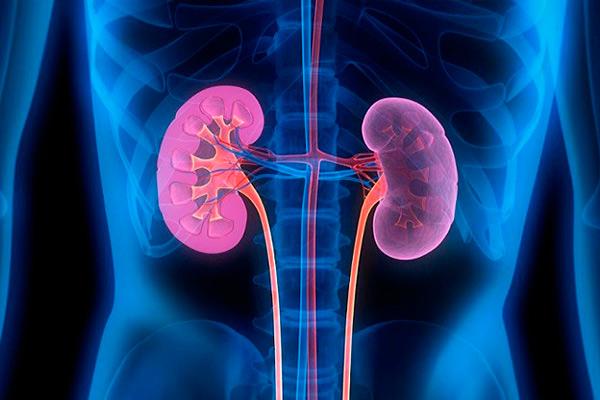Key Points:
- Contrast-induced nephropathy (CIN) is a clinical condition that refers a deterioration in kidney function after contrast exposure and is a known complication of coronary angiography
- Some studies suggest that strategies to replace nitric oxide in the body may be beneficial because nitric oxide is deficient in CIN; inorganic (dietary) nitrate is metabolized in the body to nitric oxide, and previous studies have shown protective effects on the kidneys
- The NITRATE-CIN trial examined the efficacy of inorganic nitrate for the prevention of CIN in patients with non-ST elevation ACS (NSTE-ACS) referred for invasive coronary angiography
- Compared to placebo, inorganic nitrate reduced CIN, improved kidney outcomes at three months, and reduced major adverse cardiac events (MACEs) at 12 months in patients at risk of kidney injury undergoing coronary angiography for acute coronary syndrome (ACS)
As contrast is required for coronary angiography, contrast-induced nephropathy (CIN) is a known risk of the procedure and can be considered a serious complication. Older age, heart failure (HF), and chronic kidney disease (CKD) are all independent predictors of CIN after coronary angiography for acute coronary syndrome (ACS). ESC guidelines note that CKD patients have been excluded from randomized controlled trials (RCTs) on coronary revascularization. Some research has proposed that because nitric oxide is deficient in CIN, strategies to replace nitric oxide may be beneficial. Inorganic (dietary) nitrate is metabolized in the body to deliver nitric oxide to areas in need and has demonstrated protective effects on the kidneys in pre-clinical studies. This was the subject of the NITRATE-CIN trial, which here examined the efficacy of inorganic nitrate for the prevention of CIN in patients with non-ST elevation ACS (NSTE-ACS) referred for invasive coronary angiography and at risk of CIN.
NITRATE-CIN was a double-blind placebo-controlled RCT conducted at Queen Mary University of London and St. Bartholomew’s Hospital in London, UK. Patients were randomized in a 1:1 ratio to either once daily potassium nitrate (12 mmol) or placebo (potassium chloride) capsules for five days. Patients included were at risk of CIN, defined as an estimated glomerular filtration rate (eGFR) < 60mL/min or two of the following: diabetes, cirrhosis (liver failure), age > 70, exposure to contrast within last seven days, HF (or left ventricular ejection fraction [LVEF] < 40%), and concomitant drugs active in the kidneys.
Primary endpoint was incidence of CIN (≥0.3 mg/dl or ≥26.5 μmol/L increase in creatinine (Cr) within 48 hours or ≥1.5 times within one week), as defined by the Kidney Disease Improving Global Outcomes (KIDGO) criteria for acute kidney injury (AKI). Secondary outcomes included kidney function (eGFR) at three months, rates of procedural myocardial infarction (MI), and major adverse cardiac events (MACE – a composite of death, non-fatal MI, and unscheduled revascularization) at 12 months.
Over three years, 640 total patients were randomized: 319 received inorganic nitrate and 321 received placebo. Mean age of trial participants was 71, 73.3% were men, and 75.2% were Caucasian. In addition, 45.9% had diabetes, 56% had CKD (eGFR < 60), and mean Mehran score (for risk of post-percutaneous coronary intervention [PCI] was 10. Median follow up was one year.
The study found that inorganic (dietary) nitrate significantly reduced CIN rates (9.1%) vs placebo (30.5%; p<0.001). This difference remained after adjustment for baseline Cr concentration and presence of diabetes (odds ratio [OR] 0.21; 95% confidence interval [CI]: 0.13-0.34). Secondary outcomes were improved with inorganic nitrate, with lower rates of procedural MI (2.7% vs 12.5%; p=0.003), improved three-month kidney function (between group change in eGFR 5.17; interquartile range [IQR] 3.94-7.39), and reduced one-year MACE (9.1% vs 18.1%; p=0.001) versus placebo.
Study author Dr. Dan Jones, on behalf of the team at Queen Mary University of London, remarked, “Inpatients at risk of renal injury undergoing coronary angiography for acute coronary syndrome, dietary inorganic nitrate reduced CIN compared to placebo. This corresponded to improved renal outcomes at three months and MACE at 12 months. These findings could have important implications for health systems by reducing the burden of CIN and the associated prolonged admissions, dialysis, and significant costs. Further studies powered for adverse cardiac events are needed to confirm these findings.”



